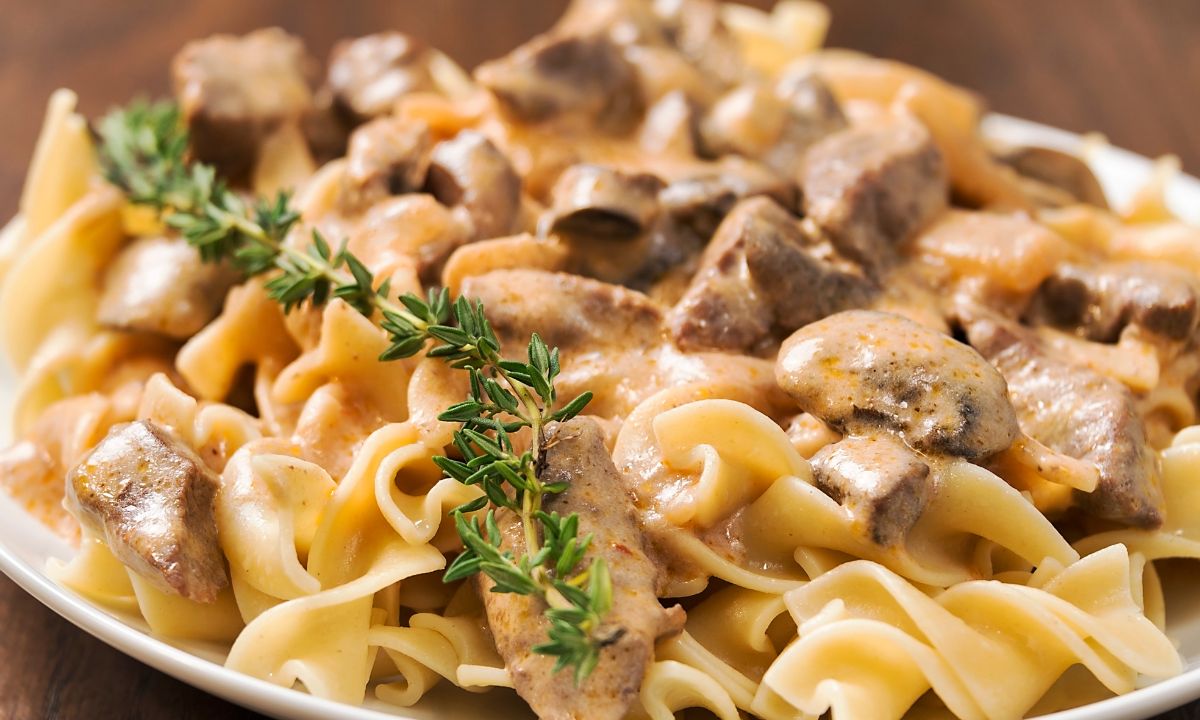Beef stroganoff is a classic comfort food dish that has been enjoyed by many for decades. This rich and creamy dish is made with tender beef, savory mushrooms, and tangy sour cream, and is traditionally served over egg noodles. In this article, we will explore the history of beef stroganoff, the ingredients and techniques used to make it, and some tips for serving and storing this delicious dish.
History of Beef Stroganoff
Beef stroganoff is a Russian dish that has been around since the 19th century. It is believed to have been created by a chef for the Stroganoff family, a wealthy Russian family, in the mid-1800s. The dish became popular in Russia and eventually spread to other parts of Europe and the world.
Ingredients
The key ingredients in beef stroganoff include:
- Beef: The best cuts of beef for this dish are sirloin, tenderloin, or flank steak. The beef should be cut into thin strips before cooking.
- Mushrooms: Button mushrooms or cremini mushrooms work well in this dish. They should be sliced thinly.
- Onion: A small onion, chopped finely.
- Garlic: Two cloves of garlic, minced.
- Sour cream: This ingredient gives the dish its signature creamy texture and tangy flavor.
- Beef broth: This is used to make the sauce that coats the beef and mushrooms.
- Egg noodles: The traditional accompaniment to beef stroganoff.
Techniques
To make beef stroganoff, follow these steps:
- Cook the egg noodles according to package instructions.
- In a large skillet, cook the beef over medium-high heat until browned. Remove the beef from the skillet and set aside.
- In the same skillet, sauté the mushrooms, onion, and garlic until tender.
- Add the beef broth to the skillet and bring to a boil.
- Reduce the heat and stir in the sour cream.
- Add the beef back to the skillet and stir until the beef is coated in the sauce.
- Serve the beef stroganoff over the cooked egg noodles.
Tips for Serving and Storing
- Beef stroganoff is best served immediately, while the sauce is still hot and creamy.
- Leftovers can be stored in an airtight container in the refrigerator for up to 3 days.
- To reheat leftovers, warm them up in a skillet over medium heat until heated through.
Variations
There are many variations of beef stroganoff, including:
- Using ground beef instead of sliced beef
- Adding red wine to the sauce for a richer flavor
- Using different types of mushrooms, such as shiitake or oyster mushrooms
- Adding peas, carrots, or other vegetables to the dish for added nutrition and flavor
Conclusion
Beef stroganoff with egg noodles is a classic comfort food dish that has been enjoyed by generations of families around the world. This rich and creamy dish is made with tender beef, savory mushrooms, and tangy sour cream, and is traditionally served over egg noodles. Whether you follow the traditional recipe or put your own spin on it, beef stroganoff is a delicious and satisfying meal that is perfect for any occasion.
FAQs
- Is beef stroganoff a Russian dish?
- Yes, beef stroganoff originated in Russia in the 19th century.
- What cut of beef is best for beef stroganoff?
- Sirloin, tenderloin, or flank steak are the best cuts of beef for this dish.
- How long can leftovers be stored?
- Leftovers can be stored in an airtight container in the refrigerator for up to 3 days.
- Can I use a different type of pasta instead of egg noodles?
- Yes, you can use a different type of pasta if you prefer. However, egg noodles are the traditional accompaniment to beef stroganoff.
- Can I freeze beef stroganoff?
- Yes, you can freeze beef stroganoff for up to 2-3 months. It is best to freeze the beef and mushroom mixture separately from the sauce and sour cream. When ready to serve, thaw the mixture and reheat in a skillet over medium heat. Add the sauce and sour cream and stir until heated through. Serve over cooked egg noodles.

